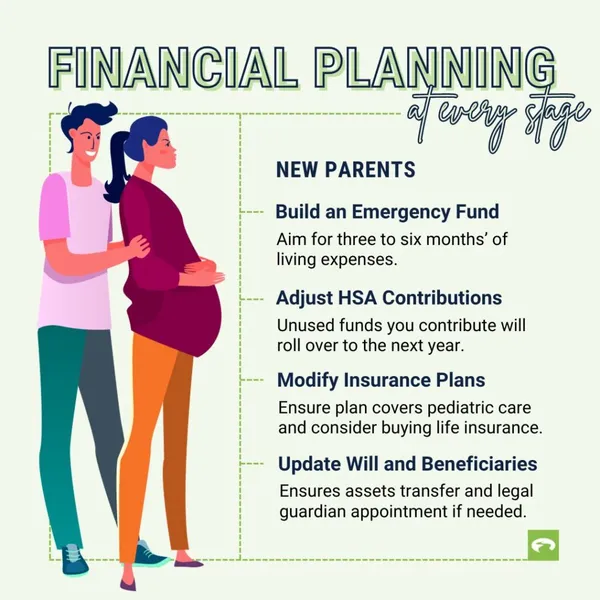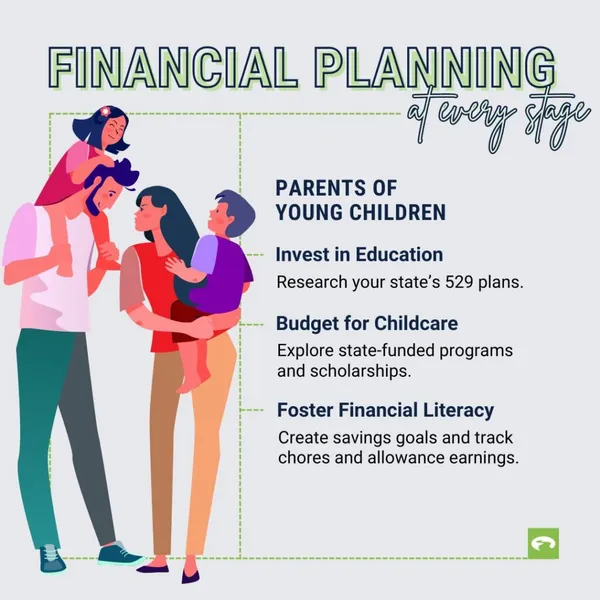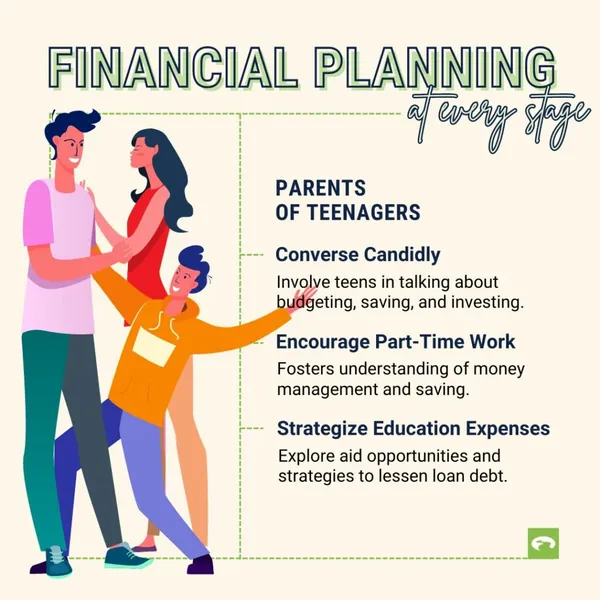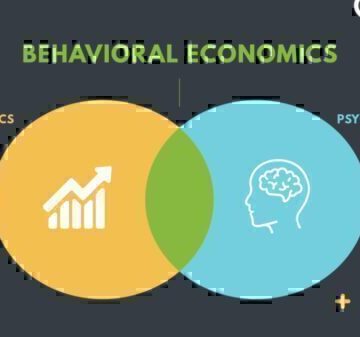New parents can provide a strong start by building an emergency fund, modifying insurance and beneficiaries, and adjusting HSA contributions.
Parents who prioritize education savings can invest early with a 529 plan. Budgeting for childcare costs and instilling basic financial literacy are also important early on.
Parents of teenagers can promote financial awareness by involving teens in discussions, encouraging part-time work, and strategically planning for college expenses.
Are you adapting to the exhaustion and euphoria of a new babynew baby? Or navigating middle school math homework or the terrain of teenagerhood? Regardless of where you’re at in your parenting journey, these financial planning tips across all ages and stages can help ensure a secure future for you and your family.
Tips for New Parents

Build an Emergency Fund
In an ideal world, new parenthood would mean hitting ‘pause’ on any added financial hurdles. Unfortunately, today’s economy presents a challenging climate for growing households, and it literally pays to be prepared.
An emergency fund provides a safety net for new parents who are unemployed or managing unforeseen expenses, such as medical events, and should be calculated based on your new family budgetfamily budget. Aim to cover three to six months’ worth of living expenses, but keep in mind that starting small is better than not starting at all.
Adjust HSA Contributions
Health Savings Accounts (HSAs) are an often-overlooked pre-tax advantage that allow you to cover a range of present and future healthcare costs for you and your family. If you have an HSA, the funds in your account can be applied toward doctor’s fees, infant formula, breast pumps, and drugstore baby products. Any unutilized funds you contribute will seamlessly roll over to the following year, continuing to accrue tax-free growth in the account.
Modify Insurance Plans
Welcoming a new baby into your family is considered a “qualifying life event,” which typically comes with its own enrollment period—most plans require that your child be added within 30 to 60 days post-arrival. During this time, you can revise your current insurance policy or shop other plans that better fit your needs.
Ensure that your plan adequately covers pediatric care and consider buying life insurance policies to secure your child’s financial future in case of the unexpected. Life insurance costs depend on your age, health, and lifestyle, but some cheaper term life insurance policies are available for a few hundred dollars per year.
Update Will and Beneficiaries
While no one wants to plan for the unthinkable, securing your children’s future welfare is essential. Adding beneficiaries to your accounts and creating a will (or revising your current will) ensures the distribution of your assets and allows a legal guardian to be appointed if necessary.
Typically, individuals designate their children or surviving spouse as the primary beneficiaries of their accounts, guaranteeing that they receive any assets and funds. You can update your will and beneficiaries whenever you choose, and a notarized will can help avoid legal battles and clearly define childcare decisions.
Tips for Parents of Young Children

Invest in Education
If education savings is a priority for your household, you can begin preparing for those expensive college tuition bills early by investing in dedicated education savings accounts. These tax-advantaged accounts can grow over time, providing a financial cushion.
Check out your state’s 529 plans and familiarize yourself with the offers. A 529 plan typically has a six-figure annual contribution limit, and recent laws have expanded how you can use 529 funds to encompass elementary, middle, and high school, middle, and even elementary tuition.
Budget for Childcare
Researchers at the Brookings Institution (an economic think tank) revealed that the average middle-income family with two children will spend $310,605 to raise a child born in 2015 up to age 17 in 2032.
Childcare expenses make up a substantial part of this expense, and it pays to explore all available options such as state-funded childcare, head start programs, co-op preschools, family assistance and any discounts and scholarships your family may be eligible for (such as tribal childcare and military discounts.)
Foster Financial Literacy
Introduce your children to the basics of financial literacy from a young age. Creating savings goals, tracking chores and allowance earnings, and using kid-friendly debit cards for small purchases can be a useful introduction to savings and banking basics. FamZoo, Greenlight, and Current are a few popular finance apps specifically designed for kids. Some charge a small download or monthly fee, but others boast the basic offerings at no cost.
Tips for Parents of Teenagers

Converse Candidly
Over six in ten Americans (62%) don’t discuss money, and unfortunately this includes talks within the family. Teenagers can grasp more complex financial concepts and should be involved in discussions about budgeting, saving, and investing.
Create a safe talking environment where they can weigh in on everyday money choices. Debate the financial pros and cons of a big purchase. Brainstorm ways they can earn for a coveted item. Try some of these good conversation starters during dinner. Healthy attitudes toward money start at home (and with you.)
Encourage Part-Time Work
Encourage your teenagers to take up part-time jobs or paid internships after school. This experience not only provides them with transferable skills they can carry forward but also helps them understand the concept of earning and managing their money week to week. Emphasize the importance of saving a portion of their income for future goals.
Strategize Education Expenses
If college is approaching in your household, revisit your education savings plan and see how your contributions are aligning with the anticipated tuition costs. If you’re feeling anxious, explore scholarship opportunities, financial aid options, and strategies to minimize student loan debt. Having a plan can alleviate the financial burden associated with college expenses.
As you navigate financial planning, remember that you’re not alone. From paying down credit card debtpaying down credit card debt you have incurred in preparing for baby to starting a savings account for your child, your money goals matter. We’re here to support you and your family. Connect with our empathetic, NFCC-certified counselors for cost-free, judgment-free financial counseling.










